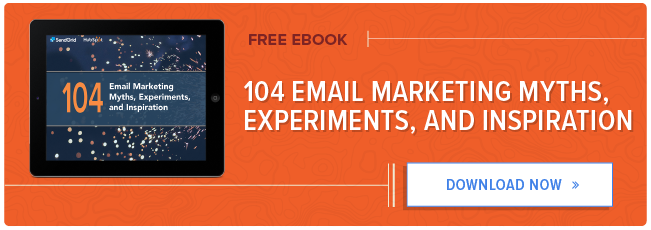Whether you’re a small entrepreneur or work for a large enterprise, email marketing is probably one of the most important communication tools that you’re leveraging at the moment.
Email marketing involves the
art of relationship building and the art of sales. If social media is a valuable vehicle to collect prospects, email communication is the channel that allows you to connect and bond with your prospects, leads, and customers.
Regardless of your business type, your ultimate goal is to improve your sales performance and grow your brand’s reputation at the same time.
For that reason, you should take a very careful approach in the relationship-building process. Take a look at these nine rules for creating high-converting emails to boost your email marketing game and improve your conversions.
9 Rules for High-Converting Emails
1. Know your audience.
Knowing your audience is the first and foremost step to take when building email lists. If you don’t know who you’re addressing, you’ll end up creating generic and unremarkable emails. Your messages will get lost among the noise, and you will lose a valuable opportunity to talk to your audience directly and grab their attention.
In order to create more effective emails, thoroughly research your target audience and find out more about their mindset, interests, needs, preferences, problems, perspectives, principles, and so on. Think of “what makes a person” and find out as much as you can about your specific future buyers. That way, your messages will be more targeted and personalized to your ideal audience.
2. Include one clear and concise CTA per email.
There’s no point in sending a person in two different directions in the same email, so one of the simplest rules to follow is to stick to one CTA per email. That doesn’t mean just one link — it means only one strong call to action backed by a hyperlink, e.g. “Check it out here…” or “Read it here…” or “Claim discount.”
3. Segment your list.
Segmentation makes room for personalized messages, which in turn involve a higher degree of relevance and value for the user. So, after building profiles for your target audience, you’ll need to create personalized groups according to what you consider to be relevant categories. You can segment your audience according to age, geographical location, pain points, interests, etc.
4. Create truly attractive subject lines.
Email subject lines act as baits: if the bait is not appealing enough, the fish will never come. Therefore, you should always do your best to create truly attractive email headlines.
Use impactful words, invoke emotions and be clear. Be creative and think outside of the box. Improved opening rates are just one subject line away.
5. Offer free value.
One of the most effective ways to attract your audience and build relationships is to offer free value via your emails. Free value can be provided in many forms, but it is mostly given through amazing information without asking for something in return. Your emails should provide educational, inspirational, motivational, and informative content free of charge.
6. Leverage the basics of psychology.
Psychology is very important in email marketing, and using some of its tricks in your email marketing can improve your conversion rates, such as:
- Color psychology
- Subconscious understanding
- FOMO (fear of missing out)
- Pictures and videos that spark intense emotions
7. Be relevant and concise.
Keep it short, and be relevant and concise. Communicating concepts and solutions in a simple, catchy way means that your message will get through to your readers faster and more easily.
8. Offer exclusive offers and discounts.
Discounts, exclusive offers, and exclusive content are great treats to give your customers through email marketing. If your customers already signaled their interest in your company by subscribing to your newsletter, give them offers and discounts as the next step to further engage them and encourage sales.
9. Test, optimize, and scale.
Test, test, test. An email marketing campaign is complex and involves several factors, which means that A/B testing is essential to figure out what works best with your customers and what results in the most conversions. If you notice any blockages in your campaign, testing will help you determine what could be the issue and allow you to fix it. If you notice positive results, focus on scaling the campaign.
![]()


